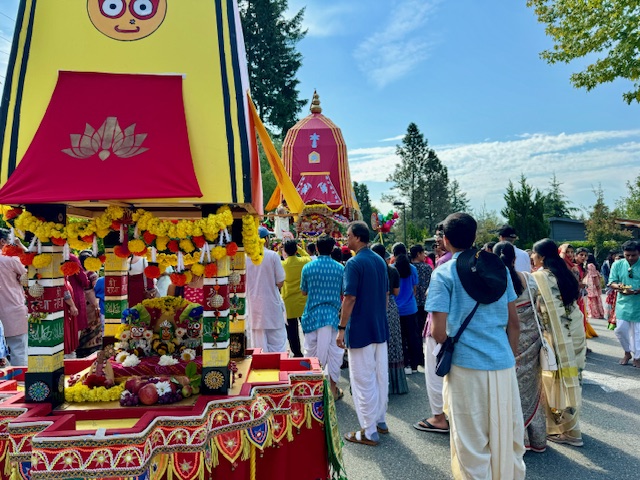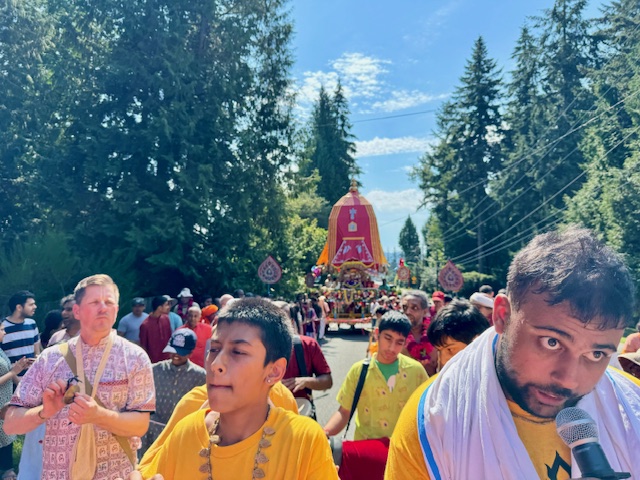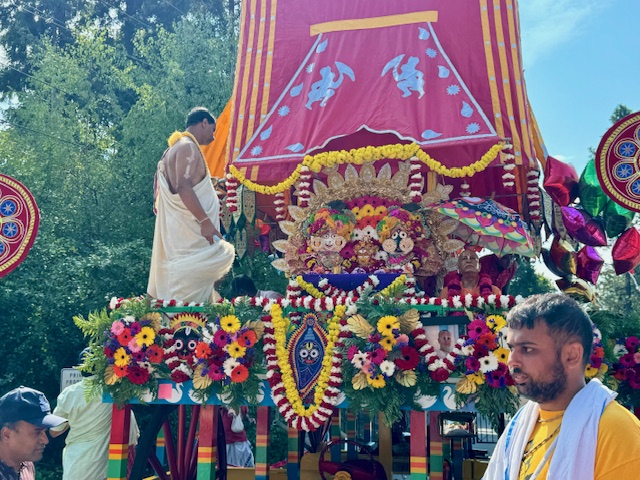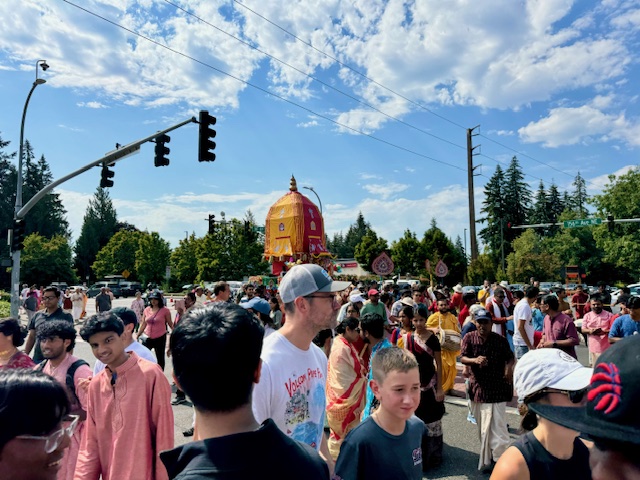On anxieties and fears – Chaitanya Charan
On feelings and facts – Chaitanya Charan
→ The Spiritual Scientist
Why we act the way we act? – Chaitanya Charan
→ The Spiritual Scientist
On perfection and committing mistakes – Chaitanya Charan
→ The Spiritual Scientist
What Is Dharma Why Do We Need It And How Do We Choose It – Chaitanya Charan
→ The Spiritual Scientist
On Dharma and being ourselves
→ The Spiritual Scientist
Highlights Report from August 22nd GBC Meeting Released
→ ISKCON News
The Governing Body Commission (GBC) has released its latest Meeting Highlights Report for August 22nd, 2024. The report aims to provide a comprehensive overview of the online GBC meeting highlighting the key topics discussed: “ISKCON GBC MEETING HIGHLIGHTS REPORT 22 August 2024 We are pleased to present the 22 August 2024 GBC Meeting Highlights Report. […]
The post Highlights Report from August 22nd GBC Meeting Released appeared first on ISKCON News.
Wisdom Munches 20: Loss process?
→ The Spiritual Scientist
Wisdom Munches 19: Different world view of karma
→ The Spiritual Scientist
Wisdom Munches 15: Lord Rama: Destiny-centered or duty-centred?
→ The Spiritual Scientist
Wisdom Munches 18: What is fixed in life?
→ The Spiritual Scientist
Wisdom Munches 17: Difference between Love & Grateful
→ The Spiritual Scientist
Wisdom Munches 16: Why rules for loving God?
→ The Spiritual Scientist
Wisdom Munches 14: Krishna’s Love Conditional or Unconditional
→ The Spiritual Scientist
Wisdom Munches 13: Why we need good karma to do bad karma
→ The Spiritual Scientist
Wisdom Munches 12: From heir to spare: Origin of Duryodhana’s envy
→ The Spiritual Scientist
Wisdom Munches 11: Srila Prabhupada’s love for Jagannatha & Jagannatha’s reciprocation
→ The Spiritual Scientist
Develop your personal relationship with Krishna (Uddipana explained) | Wisdom Munches 10
→ The Spiritual Scientist
The Motivation-Morality quadrant: Understanding 4 kinds of people | Wisdom Munches 9
→ The Spiritual Scientist
Why is Lord Jagannatha’s form so unusual? | Wisdom Munches 8 | Chaitanya Charan
→ The Spiritual Scientist
Does God ever stop loving us? | Wisdom Munches 7 | Chaitanya Charan
→ The Spiritual Scientist
Does Bhagavad-gita teach Advaitavada? | Wisdom Munches 6 | Chaitanya Charan
→ The Spiritual Scientist
Does devotion provide a licence for wrongdoing? | Wisdom Munches-5 | Chaitanya Charan
→ The Spiritual Scientist
I am a fallen soul | Wisdom Munches 4 | Chaitanya Charan
→ The Spiritual Scientist
Sri Radhastami 2024
→ Hare Krishna Auckland

Join us in celebrating Sri Radhastami on Wednesday 11th September 2024 at Sri Sri Radha Giridhari Temple.

India Lost World Cup Wisdom Munches 3 Chaitanya Charan
→ The Spiritual Scientist
46th Disappearance Day Offering of Shrila Prabhupada | ISKCON Melbourne | Chaitanya Charan
→ The Spiritual Scientist
Seattle Rathayatra Parade
→ Ramai Swami


The Seattle Rathayatra was held on the second day of the festival and started a few kilometers from the park. Their Lordships, Sri Jagannatha, Baladeva and Subhadra rode majestically on Their chariot through the streets for two hours until They came back.
There was also a smaller Rathayatra cart in front and the kirtan was led by devotee children between ten and fifteen years of age. I started off the kirtan in front of the bigger cart and other devotees took over.
When Their Lordships were brought into the park I performed an arati ceremony and gave out maha-prasadam afterwards. Kirtana, dance and drama followed through the day and everyone was very ecstatic.


Vaishnava Organizations in the UK Gather to Glorify Srila Bhaktisiddhanta Sarasvati Thakura
→ ISKCON News
ISKCON’s Bhaktivedanta Manor’s Temple President Visakha Dasi on stage with other Vaishnava representatives. Devotees from ISKCON Bhaktivedanta Manor participated in a special event in observance of the 150th anniversary of the birth of His Divine Grace Srila Bhaktisiddhanta Sarasvati Thakura. The event, hosted by the Gaudiya Mission at the Harrow Leisure Centre, brought together representatives […]
The post Vaishnava Organizations in the UK Gather to Glorify Srila Bhaktisiddhanta Sarasvati Thakura appeared first on ISKCON News.
Exploring a Devotee’s Mission to Preserve the Cultural Heritage of ISKCON
→ ISKCON News
Devotees in Vancouver perform the story of Indra cursed to be a pig. Radha Damodar Dasa, a disciple of Srila Prabhupada, has been a dedicated servant of ISKCON for over five decades. His journey within the Krishna Consciousness movement includes the significant effort of preserving 1,684 play scripts, which are not just text on a […]
The post Exploring a Devotee’s Mission to Preserve the Cultural Heritage of ISKCON appeared first on ISKCON News.
How Can I Serve You? | Wisdom Munches -2 | Chaitanya Charan
→ The Spiritual Scientist
God goes with people to Hell | Wisdom to ACT-1 | Chaitanya Charan
→ The Spiritual Scientist
Vyas Puja becomes Vipralambh Sewa
→ Dandavats
Read More...